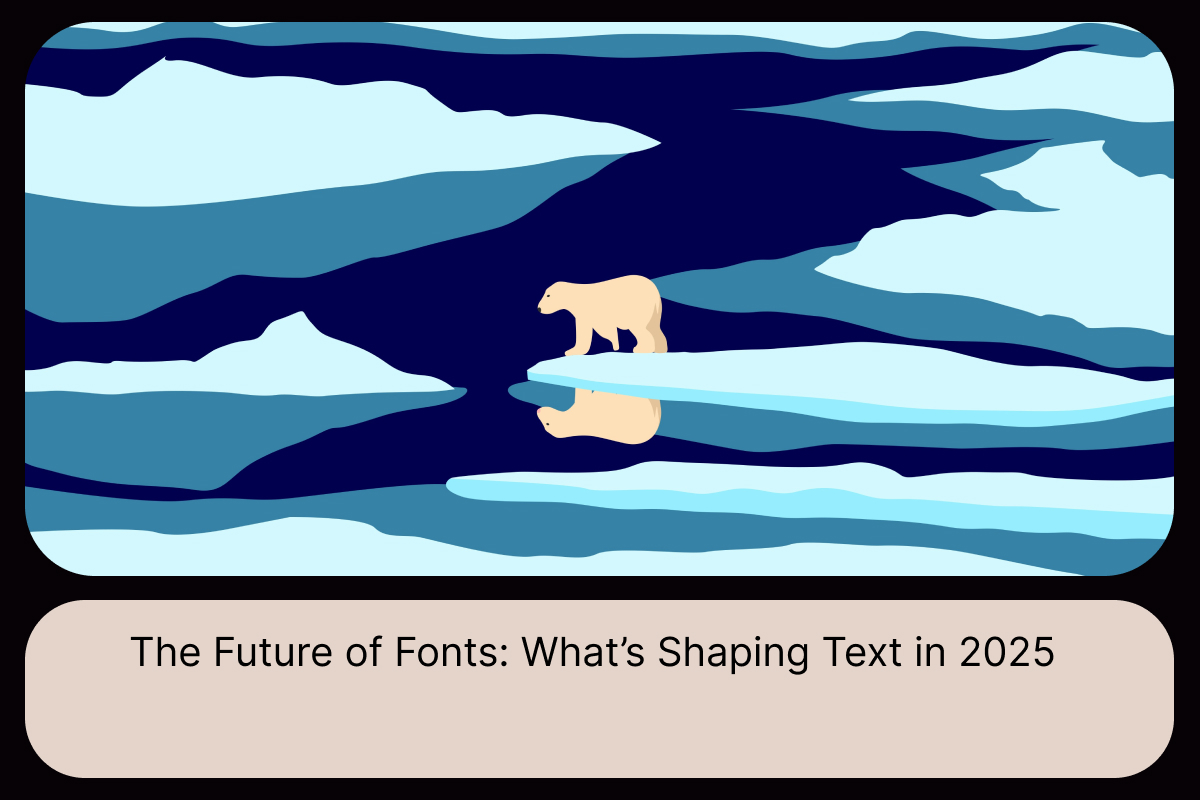Typography is no longer just about legibility—it’s about identity, emotion, and experience. As we head into 2025, fonts are becoming more responsive, more expressive, and more integral to design than ever. From websites to virtual reality, the rules of type are being rewritten to fit the fast-evolving digital landscape—defining the core of typography trends 2025.
Table of Contents
New Tech, New Type
Variable Fonts at the Forefront
The adoption of variable fonts continues to rise in 2025. These dynamic typefaces allow designers to manipulate weight, width, slant, and more—all within a single file. The result? Faster performance and greater flexibility across screen sizes and platforms. Websites load faster, UIs become sleeker, and designers gain unparalleled creative control.
Fonts Get Smarter with AI
Artificial intelligence is now a key player in font creation and customization. AI-driven tools generate typefaces tailored to specific brand tones or user interfaces, adapting kerning, spacing, and contrast automatically. These tools also help optimize accessibility, making it easier than ever to build inclusive design systems—marking a significant shift in typography trends 2025.
Visual Trends: Bold, Expressive, and Personal
Serifs Make a Statement
After years of minimalism, expressive serifs are making a big comeback. With exaggerated terminals, distinctive strokes, and a touch of vintage flair, serif fonts in 2025 are anything but traditional. They add character, storytelling, and a premium feel to branding and editorial layouts.
Sans-Serifs with Personality
Sans-serifs are also evolving. No longer plain and neutral, these fonts now feature quirky curves, soft corners, and unique ligatures that inject a modern, friendly personality. They work perfectly in digital experiences that require clarity and creativity in equal measure.
Custom Fonts for Brand Identity
More brands are investing in custom fonts to stand out in saturated markets. These bespoke typefaces reflect brand values, tone, and user experience in a consistent and memorable way—across web, app, and print.
Typography Trends 2025: Where We’re Headed
As we look at typography trends 2025, several directions stand out. First, fluid typography that adapts in real-time to the user’s environment—whether it’s light/dark mode, voice interfaces, or augmented reality. Second, the rise of motion typography that animates text into storytelling elements. Lastly, hyper-legible fonts driven by accessibility needs will continue to lead UX-first design.
Practical Tips for Designers
Stay Responsive
Make use of variable fonts to improve performance and responsiveness across devices. Consider screen sizes, interaction models, and cultural contexts in every typographic decision.
Think Beyond Static
Use animation subtly to guide attention or bring interfaces to life. Don’t overwhelm—enhance. Combine static clarity with dynamic emphasis for a layered design approach.
Design for All
Inclusive typography is here to stay. Ensure readability for users with dyslexia or vision impairments. Choose fonts with clean lines, clear distinctions, and appropriate contrast.
Conclusion: Type as a Design Power Tool
Fonts in 2025 are bold, adaptable, and forward-thinking. They do more than convey words—they create mood, spark emotion, and drive engagement. By embracing the latest tools and staying on top of emerging typography trends 2025, designers can turn typography into one of their most powerful storytelling tools. The future of fonts is here—and it’s reshaping how we read, feel, and connect.





